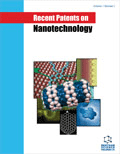
Recent Patents on Nanotechnology
metrics 2024
Navigating the Frontiers of Nanotechnology and Innovation
Introduction
Recent Patents on Nanotechnology, published by Bentham Science Publishers Ltd and based in the United Arab Emirates, is a vital resource for researchers and professionals in the rapidly evolving field of nanotechnology. Spanning from 2007 to 2024, this journal serves as a comprehensive platform for scholarly articles discussing innovative patents that drive advancements within various sub-disciplines including condensed matter physics, engineering, and materials science. With notable rankings in the Q3 and Q2 quartiles, it maintains a respectable position in key Scopus categories, highlighting its relevance and impact within the academic community. Although not open access, the journal is committed to facilitating the dissemination of cutting-edge findings and fostering collaboration among nanotechnology experts. As the field continues to expand, Recent Patents on Nanotechnology stands as an essential reference for anyone aiming to navigate the complexities and promise of nanotechnological innovations.
Metrics 2024
 0.36
0.36 2.00
2.00 2.20
2.20 36
36Metrics History
Rank 2024
Scopus
IF (Web Of Science)
JCI (Web Of Science)
Quartile History
Similar Journals

Nanomedicine Journal
Exploring the Frontiers of Nanotechnology in Healthcare.Nanomedicine Journal, published by Mashhad University of Medical Sciences, serves as a vital platform for research and developments in the dynamic field of nanotechnology applied to medicine. With an ISSN of 2322-3049 and an E-ISSN of 2322-5904, this Open Access journal, operational since 2013, makes cutting-edge research freely accessible to encourage collaborative efforts in this rapidly evolving domain. The journal navigates various areas, including bioengineering, biomedical engineering, materials science, and pharmacology, holding prestigious rankings in categories relevant to these fields. The 2023 Scopus Rankings reveal its significant standing within the scientific community, particularly with a 76th percentile in general medicine. By bridging the gap between laboratory technologies and clinical applications, the Nanomedicine Journal aims to empower researchers, professionals, and students alike to contribute to the innovative landscape of nanomedicine. With a convergence period extending from 2019 to 2024 and an established reputation, this journal is essential for those pursuing advancements in therapeutic solutions and diagnostics through nanotechnology.
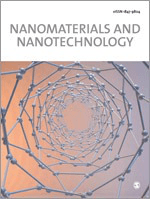
Nanomaterials and Nanotechnology
Pioneering Discoveries in Materials ScienceNanomaterials and Nanotechnology is a premier journal published by HINDAWI LTD, dedicated to advancing knowledge in the rapidly evolving fields of nanomaterials and nanoscale applications. Established as an Open Access platform since 2011, the journal aims to disseminate high-quality research that provides insights into nanotechnology's manifold aspects, including biotechnology, ceramics and composites, as well as electrical and electronic engineering. With a compelling impact factor reflected in its robust Scopus rankings—placing it in the 80th percentile in Engineering and the 72nd percentile in Biotechnology—it stands as a key resource for researchers, professionals, and students seeking to stay at the forefront of innovation in materials science. The journal occupies a distinguished position in the academic community, featuring studies that explore the synthesis, characterization, and application of nanomaterials, thereby contributing significantly to scientific discourse and technological advancement in this critical area.
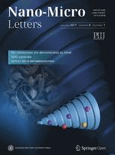
Nano-Micro Letters
Leading the charge in cutting-edge nanoscience research.Nano-Micro Letters is a premier open-access journal published by Shanghai Jiao Tong University Press, specializing in groundbreaking research in the fields of Electrical and Electronic Engineering, Nanoscience, and Materials Science. Launched in 2009, this journal has rapidly established its reputation, achieving Q1 ranking across various categories, including Electronic, Optical and Magnetic Materials, and Surfaces, Coatings and Films, indicating its significant impact within the academic community. With an impressive Scopus ranking of #5 out of 797 in Electrical and Electronic Engineering and #2 in Surfaces, Coatings and Films, Nano-Micro Letters serves as a vital platform for disseminating cutting-edge insights and innovations in nanotechnology. Researchers, professionals, and students are encouraged to engage with the open-access content, fostering a collaborative environment that promotes the advancement of knowledge in these dynamic fields.
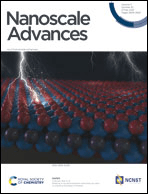
Nanoscale Advances
Connecting Research and Innovation at the Nanoscale.Nanoscale Advances, published by the Royal Society of Chemistry, stands out as a leading open-access journal dedicated to advancing the field of nanoscience and nanotechnology since its inception in 2018. With a specialized focus on areas such as atomic and molecular physics, bioengineering, chemistry, and materials science, this journal has consistently achieved top-tier rankings across several categories, reflecting its high-impact contribution to research and innovation. Currently classified in the Q1 quartile for both Atomic and Molecular Physics and Chemistry (Miscellaneous), and Q2 for Bioengineering, its prestige is underscored by impressive Scopus rankings, including a notable 34th position in General Engineering. With its commitment to disseminating high-quality research, Nanoscale Advances serves as an invaluable resource for researchers, professionals, and students alike, fostering collaboration and scholarly exchange in the rapidly evolving landscape of nanotechnology.
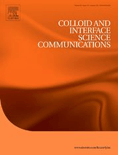
Colloid and Interface Science Communications
Leading the Charge in Surface Science AdvancementsColloid and Interface Science Communications is a prestigious peer-reviewed journal published by Elsevier, specializing in the vibrant fields of colloid and surface science, along with biotechnology. With an impressive open access policy initiated in 2022, this journal ensures wide dissemination of groundbreaking research. Its impact is reflected in its high standings within various Scopus category quartiles—ranked Q2 in Biotechnology and Colloid and Surface Chemistry, and Q1 in Materials Chemistry, Physical and Theoretical Chemistry, as well as Surfaces, Coatings and Films for 2023. Furthermore, it boasts exceptional Scopus rankings, including a top percentile position in several materials science categories, indicating its significant contribution to the scientific community. Published in the Netherlands, Colloid and Interface Science Communications aims to foster knowledge sharing and collaboration by providing a platform for innovators and researchers to explore cutting-edge developments in surface phenomena and materials interactions. As a key resource for researchers, professionals, and students alike, it plays a critical role in advancing our understanding and application of colloidal and interface science.
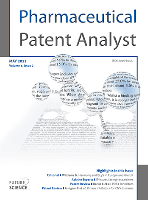
Pharmaceutical Patent Analyst
Empowering Pharmaceutical Progress Through Patent InsightsPharmaceutical Patent Analyst, published by Taylor & Francis Ltd, is a premier journal dedicated to the evolving fields of pharmaceutical science and patent law. Established in 2012, this journal provides a rigorous platform for scholarly articles, analytical studies, and insightful reviews that delve into the intersection of drug discovery, pharmaceutical innovation, and intellectual property rights. With a Q2 category ranking in Pharmaceutical Science and Q3 rankings in both Drug Discovery and Medicine (miscellaneous), it is recognized for its impactful contributions to the academic community and industry professionals alike. The journal aims to enhance the understanding of patent strategies, explore emerging pharmaceutical technologies, and foster dialogue on regulatory challenges, ultimately facilitating innovation in drug development. Although it does not currently offer open access, its comprehensive and high-quality content remains essential for researchers, professionals, and students pursuing excellence in pharmaceutical research and patent analysis.

Nanofabrication
Empowering Knowledge in Nanofabrication for AllNanofabrication is a leading open-access journal dedicated to advancing the field of nanotechnology through innovative research and comprehensive reviews. Published by the Eurasia Academy Publishing Group (EAPG) since 2014, this journal aims to provide a platform for academic discourse, promoting the latest insights and findings in nanofabrication techniques and applications across diverse domains, including materials science, electronics, and drug delivery systems. With a commitment to accessibility, Nanofabrication ensures that all content is freely available to researchers, professionals, and students worldwide, thereby fostering collaboration and knowledge sharing in the rapidly evolving landscape of nanotechnology. The journal's emphasis on high-quality, peer-reviewed research positions it as an authoritative source for those looking to stay at the forefront of developments in the field.
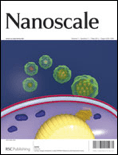
Nanoscale
Transforming Innovations at the Nanoscale.Nanoscale is a premier academic journal published by the Royal Society of Chemistry, dedicated to advancing the field of nanoscience and nanotechnology. With both its ISSN (2040-3364) and E-ISSN (2040-3372) ensuring wide accessibility, the journal is renowned for its high-impact research contributions, reflected in its impressive 2023 Impact Factor and prestigious Q1 ranking in both Materials Science (Miscellaneous) and Nanoscience and Nanotechnology categories. Since its inception in 2009, Nanoscale has fostered a collaborative platform where leading researchers from around the globe share their innovative findings across a multitude of topics spanning from material synthesis to applications in nanotechnology. The journal not only serves as a valuable resource for professionals, researchers, and students but also actively engages the academic community in discussing emerging trends, thus shaping the future of nanoscience. Situated in the heart of the UK at Thomas Graham House, Science Park, Milton Rd, Cambridge CB4 0WF, Nanoscale remains a key publication for those looking to keep abreast of the latest breakthroughs in an ever-evolving field.

JOURNAL OF CLUSTER SCIENCE
Innovating Insights Across Chemistry and PhysicsJOURNAL OF CLUSTER SCIENCE, published by SPRINGER/PLENUM PUBLISHERS, is a prominent and influential journal in the fields of Biochemistry, Chemistry, Condensed Matter Physics, and Materials Science. With an ISSN of 1040-7278 and E-ISSN of 1572-8862, this journal has been contributing to scientific discourse since its inception in 1990 and continues to publish cutting-edge research through 2024. It holds a respectable position in the academic landscape with its category quartiles indicating a Q3 ranking in Biochemistry and Q2 rankings in Chemistry, Condensed Matter Physics, and Materials Science as of 2023. The journal's noteworthy Scopus rankings further underscore its relevance, particularly a rank of #82 in Condensed Matter Physics, showcasing its impact and the quality of research disseminated. Although it does not currently offer open access options, it remains a key resource for researchers, professionals, and students who are invested in understanding the complexities of cluster science and its interdisciplinary applications.

FlatChem
Elevating Knowledge Exchange in Surfaces, Coatings, and FilmsFlatChem, an esteemed journal published by ELSEVIER, serves as a premier platform for disseminating high-quality research in the dynamic fields of ceramic and composite materials, electronic and optical materials, materials chemistry, and surfaces, coatings, and films. Since its inception in 2017, the journal has garnered a robust reputation, evidenced by its rank in the top quartile (Q1) across multiple categories, including a commendable rank of #25/127 in Ceramics and Composites and #49/284 in Electronic, Optical and Magnetic Materials. With a focus on pioneering advancements and innovative methodologies, FlatChem not only highlights cutting-edge research but also promotes collaboration and knowledge exchange within the scientific community. The journal’s impact is underscored by its impressive rankings in Scopus, marking it as a vital resource for researchers, professionals, and students aiming to stay at the forefront of materials science. As an open-access journal, it ensures that groundbreaking findings are readily accessible, fostering a broader understanding and application of materials innovation worldwide. The journal is based in the Netherlands, with its headquarters located at RADARWEG 29, 1043 NX AMSTERDAM, NETHERLANDS. Join the vibrant community contributing to FlatChem and engage with the forefront of material advancements.